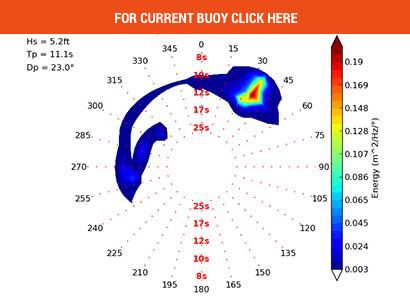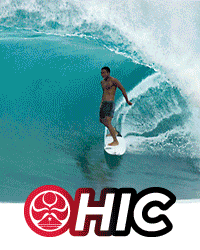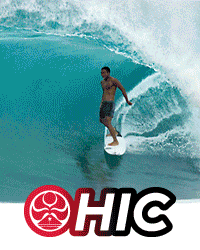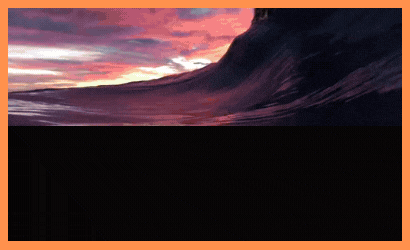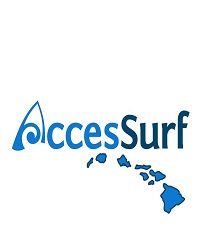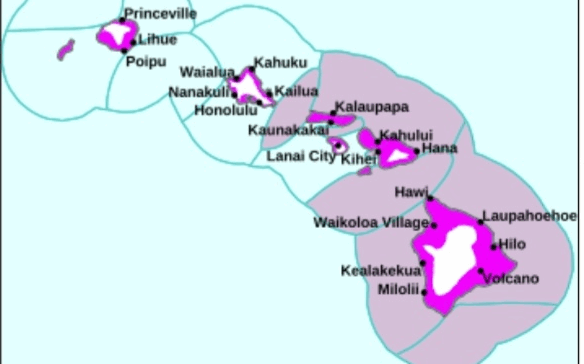
We dodged a bullet.
The event peaked 4′ for Hanalei and Haleiwa… Kaiaka park etc did flood. Kahalui reached 5’…We do have plenty debri remnants. Tsunami Adv till noon just to be safe: currents, waves, debri…
Hawaii saw water pull back by as much as 30 feet; no significant damage has been reported.
Tsunami alerts highlight hidden dangers of modest waves
Recent tsunami advisories issued by NOAA across parts of the U.S. have sparked concern—and confusion—over wave heights that may seem deceptively small.
Tsunami waves should be viewed more like hurricane storm surges than open-ocean swells.
The rapid response underscores the importance of early warning systems in protecting coastal communities from underestimated threats.
PRIOR UPDATES & NEWS BELOW…
Tuesday 7:45pm …the Expected Arrival of 1st Tsunami Wave at 710pm barely showed if at all…real impact is delayed so far. The event should last about an hour or two.
Receding water will 1st be seen for Kauai and this is what we are seeing as the sky darkens…and then the tsunami waves will roll shoreward. Hanalei is stirring. But no real waves as of 745pm.
BOUYS ARE PICKING UP THE TSUNAMI THO’…HERE’S NAWILIWILI NEAR 7PM SPIKING
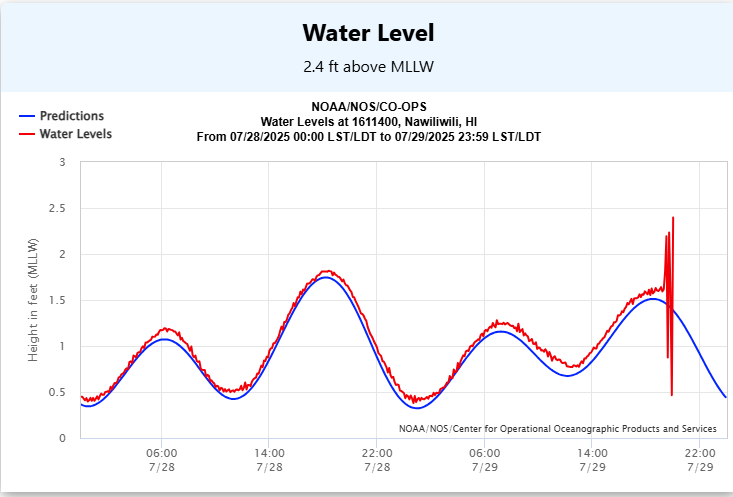
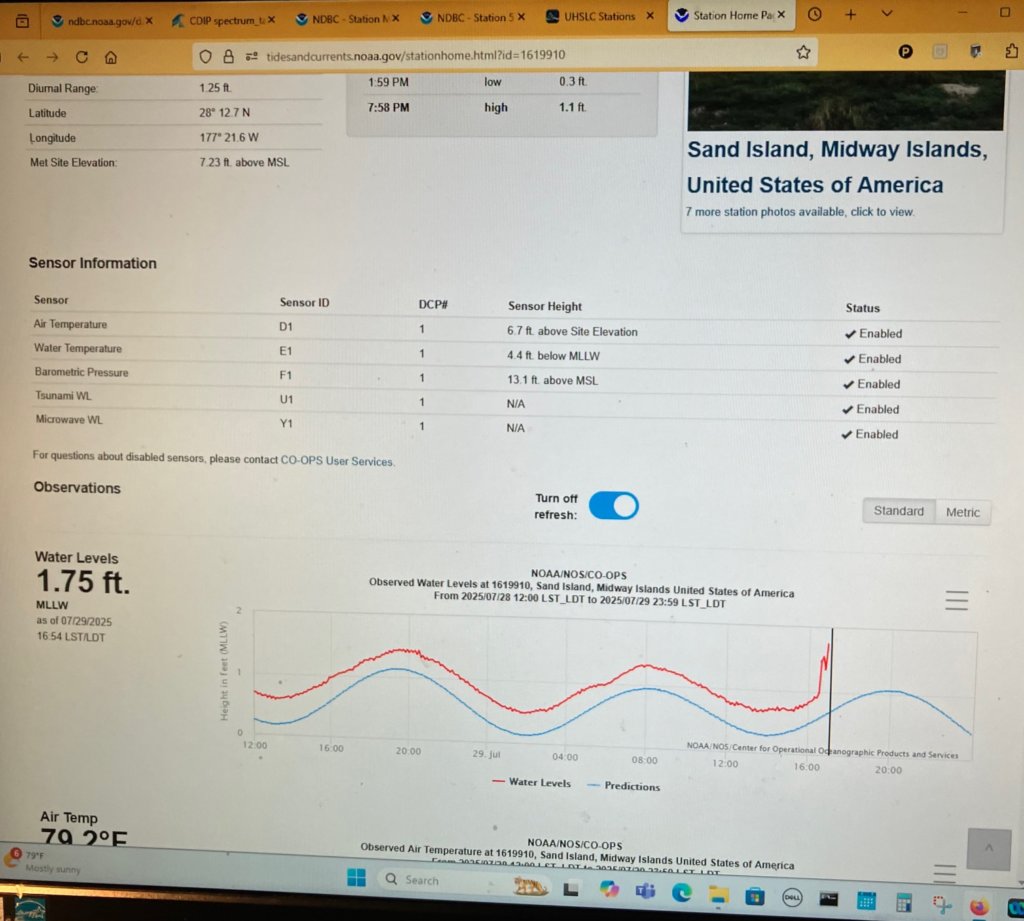
Midway Island shows spike at about 4pm… our localized topography & bathymetry (sea floor shape) will make for high variability signal for Hawaii’s Shores. Remain vigilant and safe. Mahalo Pat Caldwell.
Severe Weather Alert
Tsunami WARNING
Severity: Extreme
Extraordinary threat to life or property
Weather Event Onset
1:33 PM (HST), July 29
TSUNAMI.GOV GO HERE
LIVE HNN UPDATE HERE
TO – EMERGENCY MANAGEMENT IN THE STATE OF HAWAII
SUBJECT – TSUNAMI WARNING
EARLIEST ARRIVAL OF THE FIRST TSUNAMI WAVE IS 717 PM HST (7PM HIGH TIDE 1.5′ HONOLULU HARBOR COINCIDING WITH TSUNAMI)
AGAIN, A TSUNAMI WATCH WAS 1st ISSUED FOR THE STATE OF HAWAII EFFECTIVE AT 0133 PM HST.
AN EARTHQUAKE HAS OCCURRED.
ORIGIN TIME – 0125 PM HST 29 JUL 2025 …KURIL ISLANDS NEAR KAMCHATKA OFF THE EAST COAST RUSSIA… MAGNITUDE UPGRADED 8.8.
Russia said to have gotten up to 10′ of water elevation and damaging waves.
This magnitude or level of power is a once every decade earthquake…it’s roughly 370 billion tons of TNT denotating about 46 miles below the surface. Tsunami’s can travel over 500 mph.
Minimum (poss. moderate) wave impacts are more likely w/ some estimates 1–3 meter (~3 to 9 feet) waves/swells vs large severe waves…. but be prepared for the worst. Be safe not sorry.
MOMENT EVALUATION…Affected Area
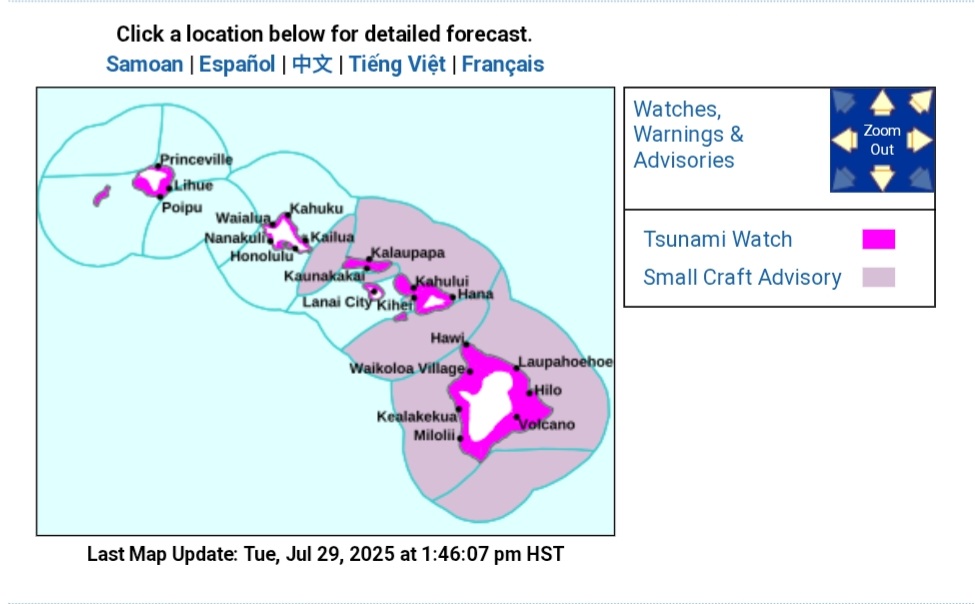
TSUNAMI WAVES IMPACT HAWAII THE ESTIMATED EARLIEST ARRIVAL OF THE FIRST TSUNAMI WAVE IS
0717 PM HST TUE 29 JULY
FURTHER MESSAGES WILL BE ISSUED HOURLY OR SOONER AS CONDITIONS WARRANT UNTIL THE THREAT TO HAWAII HAS PASSED.
Action Recommended
Monitor the situation and take precautions if necessary.
Urgency
Take action in the near future.
A tsunami is a series of long ocean waves.
Each individual wave crest can last 5 to 15 minutes or more and extensively flood coastal areas.
The danger can continue for many hours after the initial wave as subsequent waves arrive.
Tsunami wave heights cannot be predicted and the first wave may not be the largest.
Tsunami waves efficiently wrap around islands.
All shores are at risk no matter which direction they face.
The trough of a tsunami wave may temporarily expose the sea floor but the area will quickly flood again.
Extremely strong and unusual nearshore currents can accompany a tsunami.
Debris picked up and carried by a tsunami amplifies its destructive power.
Simultaneous high tides or high surf can significantly increase the tsunami hazard.
What Is A Tsunami?
A tsunami is caused by the vertical displacement of water resulting from a seismic event near or beneath the ocean floor. This displacement generates waves, often resembling fast-rising tides with strong onshore currents.
The seismic activity creates waves at the ocean’s surface that travel outward in all directions from the source.
While not all large earthquakes trigger tsunamis, an earthquake of this magnitude increases the risk. Factors such as the quake’s size, depth, and proximity to the coastline are used to determine the likelihood of a tsunami.
Tsunami waves can cross entire ocean basins at speeds of 400 to 500 mph in deep water. Vessels at sea often do not notice these waves as they pass beneath them.
However, as tsunamis approach coastal areas, they become more pronounced and dangerous, sometimes causing water to retreat from shorelines before surging back with devastating force.



